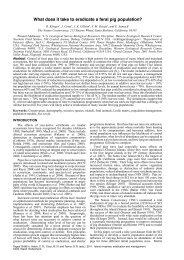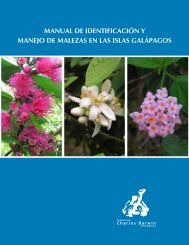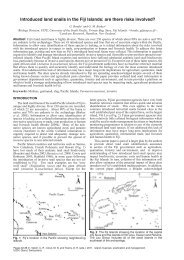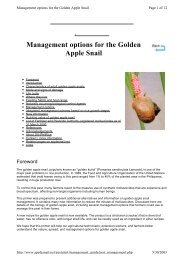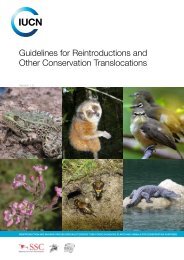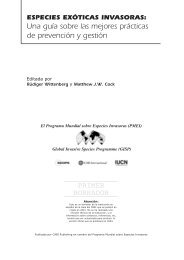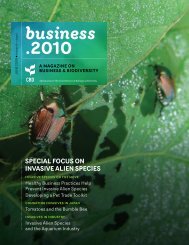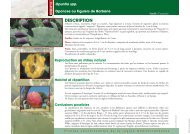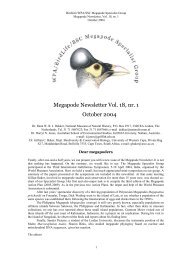Aliens Newsletter - ISSG
Aliens Newsletter - ISSG
Aliens Newsletter - ISSG
You also want an ePaper? Increase the reach of your titles
YUMPU automatically turns print PDFs into web optimized ePapers that Google loves.
duction is integrated with higher value energy or<br />
fuel production systems allowing minimisation of<br />
waste and c) offer useful agro-ecosystem services<br />
e.g. N retention or increase biodiversity. The key<br />
is to identify landscape niches where there are winwin<br />
solutions.<br />
• Bio-energy production systems based on native<br />
species are likely to be more sustainable, present<br />
fewer environmental risks, appear to offer multiple<br />
benefits including a greater capacity to support<br />
indigenous communities<br />
• A global future vision and plan for agriculture is<br />
needed to support the expected “green revolution”<br />
increasing the role of agriculture in the GDP of developed<br />
and developing countries through higher<br />
value production systems, while providing social<br />
development and protection of ecosystem service<br />
and function<br />
• Developing countries need international assistance<br />
to avoid poor decisions around implementation<br />
of these new industries. Additional international<br />
IPPC phytosanitary standards on risk-benefit<br />
analysis for managing the opportunities nonfood<br />
agro-forestry presents are needed that should<br />
include, national policy and regulatory development<br />
and capacity building, best management<br />
practices, environmental impact, weed risk assessment,<br />
and benefit cost analysis<br />
• A certification scheme addressing carbon footprint<br />
and environmental sustainability would assist<br />
such industries in national and international trade<br />
similar to that being developed for the wood products<br />
sector<br />
• Science can assist and inform;<br />
- national and regional governments in their clar-<br />
ity of purpose, investments (subsidies, buy back<br />
schemes), human health risks and what to grow<br />
where, to ensure new bio-industries address<br />
biosecurity and maintain regional long-term land<br />
use sustainability<br />
- industry in developing the safety side of ecologically<br />
sustainable business cases<br />
- Government and industry in landscape scale integrated<br />
management systems for pests, weeds<br />
and diseases, pre- and post-harvest across food<br />
and non-food cropping systems and associated extension/education<br />
needed for IPM in novel cropping<br />
systems.<br />
• Outreach requirements<br />
- Locally appropriate outreach efforts and community<br />
empowerment materials are needed to convey<br />
the benefits, risks and costs of developing a new<br />
bioeconomy. These must include environmental<br />
and social consequences to enhance making informed<br />
decisions.<br />
- Regional facilitators are needed to integrate current<br />
science and develop relevant and balanced<br />
training materials for the public. Concise fact<br />
sheets can present what is known, what needs further<br />
study and opportunities to pursue sustainably<br />
and address long-term costs as well as the shortterm<br />
gains of shifting production to a bioeconomy.<br />
Andy Sheppard<br />
Leader, Invasive Species & Plant Biosecurity<br />
Theme. Entomology CSIRO<br />
Phone: +61 2 6246 4198<br />
E-mail: andy.sheppard@csiro.au<br />
<strong>Aliens</strong> 33



